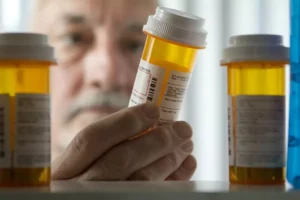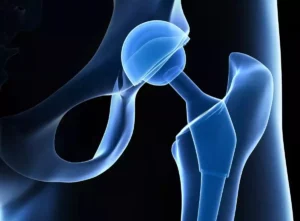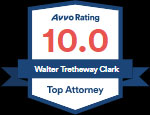A recent study reveals that one-third of Food and Drug Administration (FDA) approved drugs still pose safety risks after they are approved. The study was published in the Journal of the American Medical Association (JAMA). Researchers examined all novel therapeutics that received FDA approval between 2001 and 2010.
How Does a Drug Receive FDA Approval?
To be approved by the FDA, a drug must be shown to be both effective and safe. First, the drug manufacturer conducts tests on the drug’s efficacy and safety. These tests are often performed on animals. Next, the company must submit an application to the FDA, which includes information about the drug, the initial tests, and a plan for testing the drug on humans. If the FDA believes clinical trials are safe, the drug company is allowed to test the drug. The FDA then reviews the drug based on the testing, the drug’s labeling and the manufacturing facility. Only then does a drug become FDA approved.
However, even after a drug is FDA approved, issues can arise. In fact, the FDA recognizes that clinical trials are unlikely to demonstrate all the effects of a drug. Thus, the FDA continues to monitor drugs once they are approved.
Study Results
Out of the 222 medications included in the study, 32% of them were the subject of some FDA action due to safety issues. Three drugs had to be taken off the market. Additionally, the FDA issued 59 safety communications during the study timeframe. These communications inform doctors and consumers about newly discovered issues with medications. The FDA also issued 61 black-box warnings. Black-box warnings are the most serious FDA safety alerts and are included in the drug’s packaging. Some of the drugs in the study received more than one black-box warning added once the drug was on the market.
Perhaps the most troubling finding in the study was the time it took to identify these new issues. The median time for an action was 4.2 years after the drug gained FDA approval.
The Problem with Clinical Trials
Why is the rate of safety issues in FDA approved drugs so high? The hastiness and lack of realistic representation in clinical trials could be contributors. Many of the trials conducted on these drugs involved fewer than 1,000 patients. Moreover, oftentimes researchers only followed up with patients for six months or less.
Another issue with clinical trials is that researchers often cherry-pick the patients to try to get the best results. While this might help in testing the drug’s efficacy, it doesn’t provide a realistic representation of patients.
What is Accelerated Approval?
In 1992, the FDA introduced the Accelerated Approval Program. The purpose was to allow certain new drugs to hit the market faster. Drugs that go through the accelerated process are generally medications for serious conditions like cancer, that have been manufactured to fulfill an unmet need. While these drugs must still undergo clinical trials, the rules are different. Traditional clinical trials must prove that a drug has a beneficial end result for patients. For instance, in the case of a life-threatening disease, the clinical trial for a drug should prove the drug can prolong survival, or that it significantly improves a patient’s quality of life. These are tangible effects that can be measured by results like relief of symptoms or a patient’s improved ability to perform normal activities.
On the other hand, drugs specified for accelerated approval can test for “surrogate endpoints.” Because testing for long-term symptom relief or total recovery would require a lengthy process, these tests look for biological markers that are linked to those long-term goals. For instance, instead of testing for prolonged survival in cancer patients, a test might prove tumor shrinkage. Because tumor shrinkage is a biological marker for prolonged survival, the FDA might allow this in an accelerated approval scenario.
Accelerated approval is a catch-22, though. Patients can have quicker access to FDA approved drugs that could benefit them. The downside is that accelerated trials provide even less time than regular clinical trials to determine safety issues. This is made evident in the FDA study, which revealed that medications most likely to exhibit safety concerns down the road were those that received accelerated approval.
Drug Lawsuits for Failure to Warn
Even after the FDA has determined that a drug company make changes to its medication or its labeling, problems can continue. This is the case in New Jersey, where AstraZeneca Pharmaceuticals and Bristol-Myers Squib are facing 14 lawsuits for the diabetes drug saxagliptin. The lawsuits claim the pharmaceutical companies began selling saxagliptin in 2009 without performing trials to assess cardiac risks.
The FDA issued a bulletin in 2008 asking developers of diabetes drugs to prove their drugs do not increase cardiac risk in users. Then in 2015, an FDA committee recommended companies add a heart failure warning to saxagliptin’s label. The FDA followed that up with an announcement in 2016 stating that saxagliptin users have an increased risk of heart failure. They also required companies to revise the drug’s warning label. According to the pending lawsuits, the drug companies knew about the drug’s cardiac risks, but failed to notify doctors and consumers.
What is the FDA’s Course of Action for Non-Compliant Drug Companies?
If a drug company fails to take the appropriate measures to address issues brought up by the FDA, the agency can take certain actions in the interest of protecting public health. They can take legal action to stop a company from manufacturing or distributing a drug. Additionally, they can issue a consumer alert warning the public not to take the drug.
The reality is, all medications pose risks—some more serious than others. Even with careful regulation, it’s difficult to determine all of a drug’s risks before it becomes available to the public. However, the high rate of safety risks discovered years after a drug is made available is cause for concern.
“We understand the need for accelerated approval for certain life-saving medications. However, consumers also have a right to safe and effective drugs, and this study calls into question the safety of many of the approved drugs on the market,” said Attorney Walter Clark, founder of Walter Clark Legal Group.
Our firm has been handling personal injury cases throughout the California Low Desert and High Desert communities for over 30 years. With a 95% success rate, the California personal injury attorneys at Walter Clark Legal Group will fight to hold those responsible for your loss accountable and win compensation to cover medical bills, lost wages, and pain and suffering. If you have been injured by a drug and want to discuss your legal options, contact us today for a free consultation with an experienced personal injury lawyer. We have offices in Indio, Rancho Mirage, Victorville, and Yucca Valley and represent clients through the entire California Low Desert and High Desert communities.
DISCLAIMER: The Walter Clark Legal Group blog is intended for general information purposes only and is not intended as legal or medical advice. References to laws are based on general legal practices and vary by location. Information reported comes from secondary news sources. We do handle these types of cases, but whether or not the individuals and/or loved ones involved in these accidents choose to be represented by a law firm is a personal choice we respect. Should you find any of the information incorrect, we welcome you to contact us with corrections.
- What To Do If You Have Been Injured At A Concert In California? Mar 27,2024
- Walter Clark Legal Group Reimburses Thanksgiving Ride Fares Nov 14,2023
- Walter Clark Legal Group Donates Backpacks to Booker T. Washington Elementary School Aug 22,2023
- Walter Clark Legal Group Donates Backpacks to Underserved Students Aug 22,2023
- Walter Clark Legal Group Reimburses Labor Day Ride Fares Aug 21,2023
- 2023 Safe Ride Home Program Jun 21,2023





















